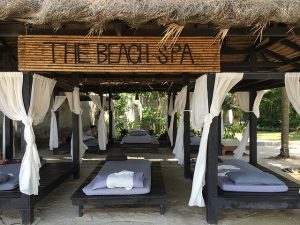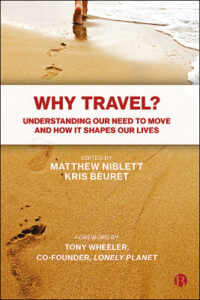Health Tourism: Travelling for medical treatment, health and wellness throughout the ages
October 2017
‘Health Tourism’ is a term that often hits the UK headlines in reference to people travelling to Britain to obtain treatment from the NHS free of charge. Some recent coverage, for example, has focused on women coming to give birth in the UK when pregnant with triplets and quadruplets who may need expensive neonatal care.[1] There are concerns about the financial burden of such ‘health tourism’; although the government estimates the cost at only around 0.3% of the NHS total budget.[2]
The UK is not only a destination for ‘health tourists’ but also a source country for them, in many cases to purchase treatments at a lower cost than would be available privately in the UK. In this respect, the number of UK nationals travelling abroad to procure medical treatments is greater than the number of people of other nationalities who travel here and have treatment on the NHS. Trips to eastern Europe for private fertility treatment, bariatric surgery and dental work are among the most common choices for Britons.[3]
These trends are not unique to the UK or to modern times; health has been a motivator of travel for millennia. One of the earliest known examples was the temple of Aesclepius, the Greek God of Healing, in Epidaurus, which was a major healing centre within the Classical world for centuries. Later, religious sites associated with Christian saints became popular for their believed healing powers, and today some, such as Lourdes in France, draw millions of visitors every year. Natural spas and mineral waters have been regarded as having curative properties by many cultures and people have long travelled to these destinations in search of healing water. For example, in the second century BC the first Emperor of the Chinese Qin Dynasty is supposed to have travelled to bathe in natural springs in order to cure his skin diseases.[4] In 18th century Europe travel in search of healing waters became very fashionable and led to huge growth in spa towns like Aix-les-Bains in France, Baden-Baden in Germany and Bath in England. At the same time, belief in the healing properties of sea-bathing also led to the development of popular seaside resorts such as Brighton. In the 19th and 20th centuries numerous sanatoria were founded in the Alps, where doctors believed the clear mountain air could help conditions such as tuberculosis.[5]
In more recent times, an increasingly affluent population and globalization have combined to make health tourism a major industry. This can be broadly divided into two categories: ‘medical tourism’, in which people travel across borders to access specific medical treatments; and ‘wellness tourism’, in which people travel in order to improve their physical, mental and spiritual health through specific activities and environments.
According to Patients Beyond Borders the market size for medical tourism is somewhere between $46 billion and $72 billion per year, with an estimated 14 million patients spending an average of around $5,000 USD per trip. The most popular destinations include India, Thailand, South Korea and Taiwan where people seek a variety of treatments, from cancer and cardiovascular care to cosmetic and dental surgery.[6] ‘Wellness tourism’ is an even larger sector of the tourist industry, estimated to account for approximately 14% of global tourism revenues – around USD 439 billion in 2014.[7] Such tourists engage in sports and fitness activities, healthy eating, spa resorts, yoga retreats and other activities associated with physical, mental and spiritual health, including taking advantage of a change in climate and natural environment. Poor air quality is becoming a major issue for many of the world’s urban residents and is driving some to seek holidays that quite literally offer a breath of fresh air. According to one Chinese travel company the Seychelles, Maldives and Iceland were top of the list for holiday-makers specifically trying to escape Beijing’s smog this winter.[8] Such activities echo the practice of elites throughout the ages who have escaped the city, usually during the summer, in search of healthier climes.
From the pump room at Bath in the times of Jane Austen to the plastic surgery consultation rooms of 21st century Seoul, travellers have long flocked to destinations near and far in order to improve their health or receive treatment. In an increasingly globalised world where agents can broker travel and treatment packages and in which increasing numbers of people have the means to pay for them, health tourism continues to grow apace and forms a major force shaping world travel trends. Understanding the motivations that shape such travel behaviours is a central concern to the Independent Transport Commission’s Why Travel? project. Integrating perspectives from across the sciences, arts and humanities, the project looks to the past, present and future of human travel, in order to better understand why we travel in the ways that we do, and how we might improve the decisions we make about travel. For more information on our research as well as regular news items and talks from travel experts, please see our website www.whytravel.org
See also:
Active Travel blogpost
Forthcoming chapter on Tourism by Hazel Andrews in the ITC’s book Why Travel? (forthcoming)
Notes:
[1] See for example http://www.bbc.co.uk/news/uk-politics-38809530 and http://www.dailymail.co.uk/news/article-4186478/Health-tourism-admits.html
[2] https://fullfact.org/health/health-tourism-whats-cost/
[3] Lunt N, Smith R, Mannion R, Green S, Exworthy M. Implications for the NHS of Inward and Outward Medical Tourism: a policy and economic analysis using literature review and mixed methods approaches. Health Serv Deliv Res 2014;2(2) https://www.journalslibrary.nihr.ac.uk/hsdr/hsdr02020#/abstract
[4] Springs and Bottled Waters of the World: Ancient History, Source, Occurrence, Quality and Use edited by Philip E. LaMoreaux, Judy T. Tanner
[5] Famous writers such as Thomas Mann, Robert Louis Stevenson and Sir Arthur Conan Doyle all visited the Alps for their health https://www.theguardian.com/society/2013/dec/25/davos-clinic-last-breath-haven-allergy-sufferers
[6] https://patientsbeyondborders.com/medical-tourism-statistics-facts
[7] According to a report by non-profit research institute SRI International http://www.sri.com/newsroom/press-releases/growing-global-wellness-tourism-sector#sthash.Mk5IKqdA.dpu
[8] https://www.japantimes.co.jp/news/2017/01/10/asia-pacific/science-health-asia-pacific/iceland-maldives-chinese-seek-lung-cleansing-trips/#.WdoeRDuQzIU



